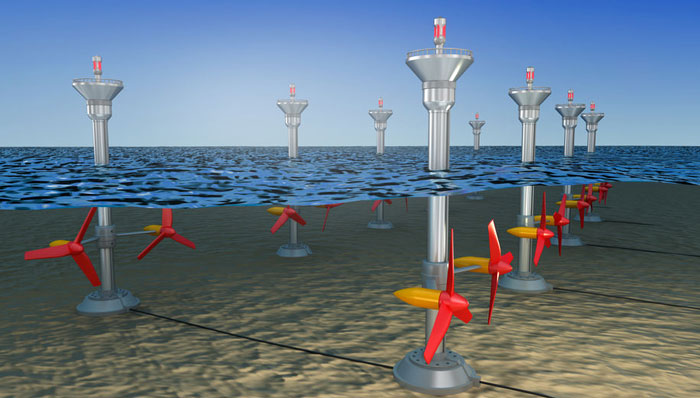
We live in a world where the term “global warming” is often thrown around, but it could be a real threat to our way of life. According to the National Resources Defence Council, freak weather occurrences that were a result of climate change caused $53 billion in damage during 2011 alone. Not to mention that, in the same year, 206 people died from conditions caused by extreme heat. We are not as invincible as we feel, and someone needs to take action. Carbon emissions from fossil fuels are currently the number one enemy of this planet, and people are beginning to wake up to the fact that we need to make a change.
Renewable Energy – Harnessing the Power of the Waves
Sustainable energy is the latest hot topic for those hoping to halt climate change. It’s imperative that we find clean sources of power if we want to keep on using energy in our homes and our everyday lives without causing so much pollution. Experts are starting to view sea power as a viable source of renewable energy. The World Energy Council recently stated it believes power from all the oceans of the world could create the equivalent of twice the world’s current annual energy output. This means, theoretically, that wave energy could supply electricity to the whole world. It’s also seen as one of the cleanest and most environmentally sound forms of energy, which is vital if we want to protect the Earth from further damage so we can leave a legacy for future generations.
Moving Forward with Sea Power
Historically speaking, there have been numerous attempts to harness energy from the waves. The first recorded patent for a device to create powerf rom the motion of the sea was filed in Paris during 1799 by Monsieur Girard and his son. However, things have changed a lot since then, and it’s only in recent years that power generated by wave farms has become a real possibility as a source of sustainable energy.
In fact, it has recently been reported that wave energy converters could double the amount of marine-based energy they collect if they can manage to harness the maximum energy of waves. The net potential of wave power is currently thought to be of equal value to or more cost effective than any other source of sustainable energy, which means it’s potentially both green and cheap.
The first modern wave farm was created by Islay Limpet in1991. Since then, many more wave farms have been built. Each differs slightly according to their creators’ ideas on how best to harvest the power of the ocean. Some, for instance, are based around the concept of utilizing hydraulic pressure created by the movement of the farm’s buoys.
Impact on Our Environment
According to the International Energy Agency, a record high of 31.6gigatonnes of CO2 emissions were released from the combustion of fossil fuels in 2011. The more power which we can harness from the waves, the more we can reduce this figure.
Looking to the future, it would be possible to gain all our energy from sea power and other sustainable energy sources. The Energy Systems Research Unit at the University of Strathclyde states that wave farms couldhave additional positive environmental impact on the flora and fauna of the ocean, as the anchoring systems for the buoys or devices will create an artificial reef, providing new space for plants and creatures to colonize.
The time for renewable energy is now. It’s essential that we pay attention to forms of sustainable power that could offer real, long-term solutions to our energy crisis.